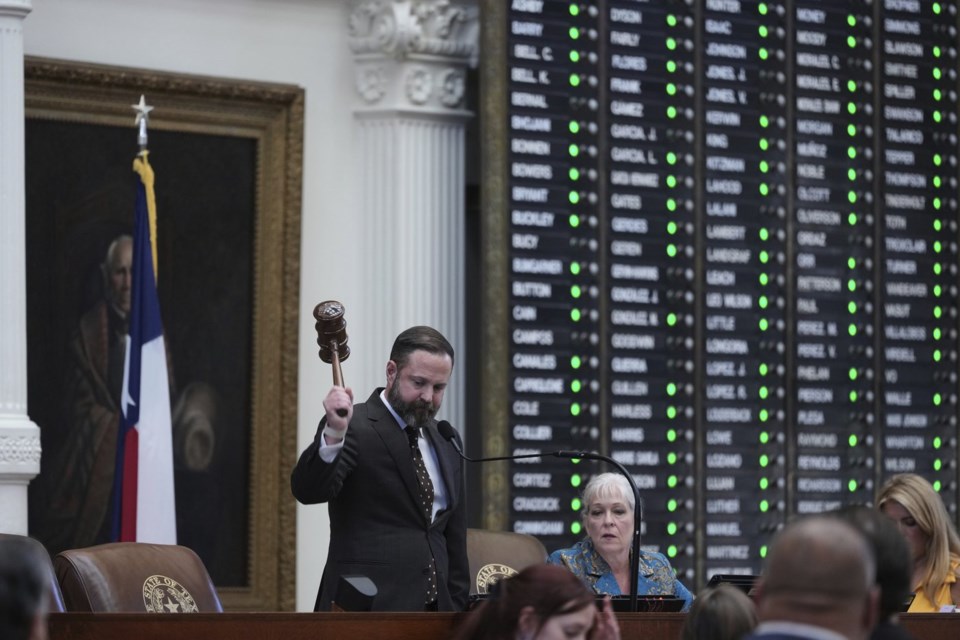A Democratic lawmaker is staying in the Texas Capitol rather than accept an around-the-clock police escort that Republicans imposed to keep she and her colleagues from leaving the state again and further delaying the GOP's redrawing of congressional districts as President Donald Trump wants.
Dozens of Texas Democrats ended a two-week walkout Monday after Democrats in California heeded Gov. Gavin Newsom’s call to counter the GOP effort in Texas by redrawing districts there.
Democratic state Rep. Nicole Collier, who represents a minority-majority district in Fort Worth, stayed on the House floor Monday night and Tuesday. The House is not set to convene again until Wednesday, when a vote on the maps is scheduled.
In California, the Democratic-supermajority Legislature faces tight deadlines, and a plan would have to be approved by voters in November.
Republicans have more options for mid-decade redistricting than Democrats because they control more statehouses, and they’ve talked about redrawing districts in Florida, Indiana and Missouri.
Here’s what to know.
Democrats are back in Texas, but there's still a protest
Democratic lawmakers said state Department of Public Safety officers followed them around the Capitol on Monday, either guarded their offices or stayed in them, and tailed them when they left. They had to sign what they called “permission slips” and accept the surveillance to leave the building.
Collier described it as an attack on her dignity and an effort to control her movements. She refused to sign and so had to stay in the Capitol.
Republicans are trying to prevent a repeat of the walkout that denied the House enough members to meet and prevented it from doing any business. Dozens of lawmakers fled to Democratic-led states, including California, Illinois and Massachusetts, to stay out of the reach of Texas law enforcement officers trying to bring them back.
Suburban Dallas Rep. Mihaela Plesa said she and her fellow Democrats have no plans to bolt again. She criticized Republicans for “literally taking police officers off the street.”
Trump is trying to avoid a congressional check on him
Both Trump and the Democrats are looking ahead to the 2026 midterms knowing that they often go against the president's party, as they did during Trump's first term in 2018. Republicans currently have a seven-seat majority in the 435-member House.
State legislatures draw the lines after each U.S. census in most states — including Texas — and only a few dozen House districts are competitive.
In Texas, Republicans hold 25 of 38 seats, and they're trying to increase that to 30. In California, Democrats have 43 of the 52 seats, and they're trying to boost that to 48, to wipe out the advantage the GOP would gain from redrawing lines in Texas.
California is more complicated for Democrats
In some ways, the nation’s most populous state, California, is a reverse-mirror image of the nation’s second most populous state, Texas. Democrats are even more firmly in control of state government there than Republicans are in Texas, with Democratic supermajorities in both California legislative chambers.
But California’s districts were drawn by an independent commission created by a statewide vote in 2008 after years of intense partisan battles over redistricting.
Democrats are trying to avoid legal challenges to a new map by asking voters to approve it as an exception to the normal process, which would require a special election in November. Texas has no such commission, so its Legislature doesn’t have to seek voters’ approval for its maps.
California lawmakers returned Monday to the state capital from a summer break. They are scheduled to remain in session through Sept. 12.
John Hanna, The Associated Press



